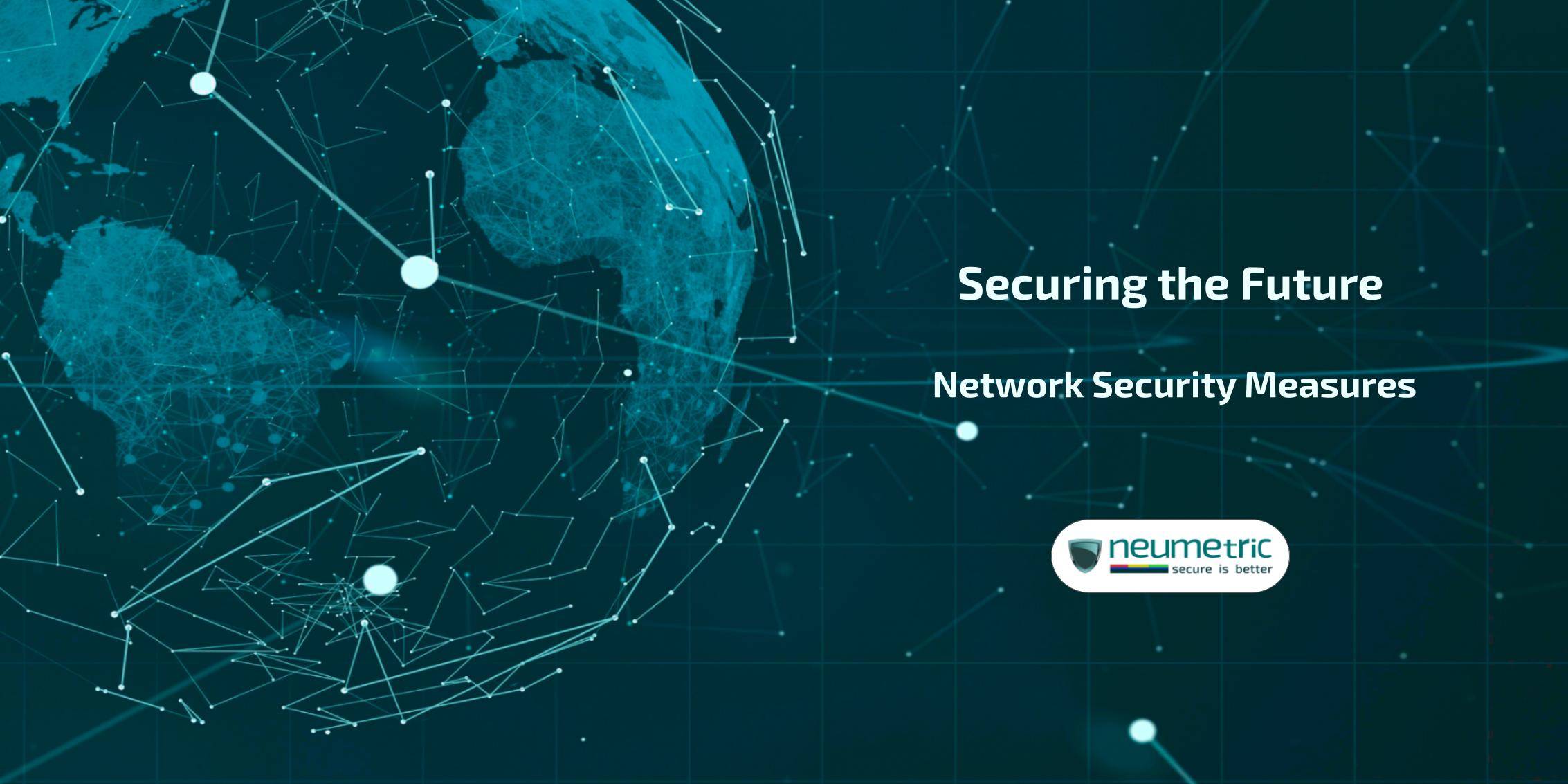Table of Contents
ToggleIntroduction
Network security isn’t just a buzzword; it’s a shield protecting us from the relentless onslaught of cyber threats. From personal data privacy concerns to safeguarding critical infrastructure, the integrity & resilience of networks are at the core of ensuring a safe digital environment. Consider the proliferation of IoT devices, where everything from smart homes to industrial machinery is connected. The more we interconnect, the more vulnerable we become. This interconnectedness opens gateways for cybercriminals to exploit, emphasising the dire need for robust network security measures.
The landscape of cybersecurity is in constant flux, a realm where threats mutate & evolve at breakneck speed. What began as relatively simplistic viruses & worms has metamorphosed into highly sophisticated malware & ransomware, capable of penetrating even the most fortified networks. Moreover, the perpetrators of cyber threats have diversified. It’s no longer just lone hackers in dimly lit rooms; it’s well-funded criminal organisations & even state-sponsored entities. Their motivations vary from financial gain to espionage, making the threat landscape multifaceted & unpredictable.
Understanding this evolution is critical. It’s not merely about acknowledging the existence of threats but comprehending their adaptive nature. Today’s cybersecurity isn’t just about building walls; it’s about understanding how these threats seep through, exploiting vulnerabilities we might not even be aware of. The paradigm shift in cybersecurity underscores the urgency for proactive measures & continuous adaptation to counter emerging threats.
Fundamentals of Network Security
At its core, network security is the fortress that shields our digital infrastructure, encompassing an array of practices, technologies & policies designed to defend against unauthorised access, misuse, alteration or denial of the network & its resources. The primary objectives of network security are threefold: Confidentiality, Integrity & Availability [CIA]. Confidentiality ensures that sensitive information remains accessible only to authorised individuals. Integrity ensures that data remains unchanged & trustworthy. Availability guarantees that network services & resources are consistently accessible to legitimate users.
Common Threats & Vulnerabilities Faced by Networks
- Malware & Ransomware: Malware, a catch-all term for malicious software, encompasses viruses, worms, Trojans & more. These programs infiltrate networks, corrupting or stealing data, disrupting operations & compromising security. Ransomware, a particularly nefarious breed of malware, encrypts data, holding it hostage until a ransom is paid.
- Phishing Attacks: Phishing attacks lure unsuspecting users into divulging sensitive information by masquerading as trustworthy entities. Whether through deceptive emails, fake websites or social engineering tactics, these attacks exploit human vulnerabilities to gain unauthorised access.
- Insider Threats: Insider threats arise from within an organisation, often from employees, contractors or partners. Whether through intentional malice or negligence, insiders can compromise network security by leaking confidential information, abusing privileges or installing unauthorised software.
- DDoS Attacks: Distributed Denial-of-Service [DDoS] attacks flood networks or servers with an overwhelming volume of traffic, rendering them inaccessible to legitimate users. By overwhelming the target with traffic from multiple sources, DDoS attacks disrupt services & undermine network availability.
Understanding these threats is crucial for fortifying defences. Network security isn’t just about building walls; it’s about understanding the tactics used by cyber adversaries to breach these defences. In the subsequent sections, we’ll explore advanced security measures aimed at mitigating these threats & ensuring robust network protection.
Cutting-Edge Network Security Measures
Encryption Technologies: Strengthening Data Protection
- End-to-End Encryption: End-to-end encryption [E2EE] has emerged as a gold standard for safeguarding sensitive data across communication channels. It ensures that only the sender & intended recipient can access the transmitted information, rendering it unreadable to intermediaries or malicious actors. This robust encryption method ensures data remains confidential & secure, whether it’s messages, files or sensitive information transmitted over networks or stored in the cloud.
- Quantum Cryptography Advancements: Quantum cryptography, leveraging the principles of quantum mechanics, holds promise in developing encryption methods resistant to quantum computing attacks. Unlike traditional encryption algorithms vulnerable to quantum decryption, quantum cryptography relies on quantum key distribution, making it theoretically impossible for eavesdroppers to intercept encrypted data without detection.
AI & Machine Learning in Network Security
- Predictive Analytics for Threat Detection: AI-driven predictive analytics enables proactive threat detection by analysing vast volumes of data to identify patterns indicative of potential security breaches. Machine learning algorithms can forecast potential threats based on historical data, behavioural analytics & emerging trends, allowing security teams to preemptively address vulnerabilities before they are exploited.
- Behavioral Analysis for Anomaly Detection: By employing machine learning algorithms to study user & system behaviours, security systems can detect anomalies deviating from normal patterns. Behavioural analysis aids in swiftly identifying suspicious activities or deviations from standard user behaviour, flagging potential security breaches for immediate investigation.
Zero Trust Architecture: Rethinking Network Perimeters
- Principle of Least Privilege: Zero Trust Architecture [ZTA] challenges the traditional perimeter-based security model by assuming no trust, even within the internal network. The principle of least privilege ensures that access to resources is granted on a need-to-know basis, minimising the potential attack surface & reducing the impact of compromised credentials.
- Continuous Authentication: In a Zero Trust environment, continuous authentication constantly verifies user identities & validates access requests throughout a session. This ongoing validation, often employing multi factor authentication & contextual factors, ensures that access remains authorised, adapting to evolving user behaviours & potential threats.
These innovative approaches mark a shift towards proactive, adaptive & holistic network security measures, reinforcing the defence against an ever-evolving landscape of cyber threats. As technology progresses, integrating these measures becomes pivotal in fortifying network infrastructures against sophisticated adversaries.
Implementing Robust Network Security Protocols
Network Access Control [NAC] Strategies
- Role-Based Access Control [RBAC]: RBAC is a foundational NAC strategy that assigns access permissions based on predefined roles within an organisation. Users are granted permissions specific to their roles, ensuring they can only access resources essential to their job functions. This minimises the risk of unauthorised access or privilege escalation.
- Network Segmentation Techniques: Network segmentation involves dividing a network into smaller, isolated segments or zones, each with its access controls. By compartmentalising the network, even if one segment is compromised, it limits the lateral movement of attackers, preventing them from gaining unrestricted access to critical assets.
Endpoint Security Best Practices
- Endpoint Detection & Response [EDR]: EDR solutions provide real-time monitoring & response capabilities on endpoints (such as computers, mobile devices & servers). These tools detect suspicious activities, investigate potential threats & enable rapid response to contain & remediate security incidents at the endpoint level, reducing the impact of attacks.
- Application Whitelisting: Application whitelisting permits only approved & verified programs to run on endpoints or systems. Unlike traditional antivirus solutions that focus on blacklisting known threats, whitelisting allows organisations to specify which applications are permitted, significantly reducing the attack surface by preventing the execution of unauthorised or malicious software.
Implementing these robust network security protocols not only fortifies the defence mechanisms but also establishes a layered approach to safeguarding critical assets. By combining access controls, segmentation techniques & endpoint security best practices organisations can create formidable barriers against a wide array of cyber threats. This multi-faceted approach is essential in maintaining the integrity & resilience of network infrastructures in the face of evolving security challenges.
Regulatory Compliance & Network Security
GDPR, CCPA & Emerging Data Privacy Laws
The General Data Protection Regulation [GDPR] & the California Consumer Privacy Act [CCPA] stand as pivotal pillars in the realm of data privacy & protection. GDPR originating from the European Union & CCPA, from the state of California, aim to empower individuals with control over their personal data & hold organisations accountable for its secure handling.
These regulations impose stringent requirements on how organisations collect, store, process & share personal data. They necessitate measures like explicit consent for data collection, robust data encryption, timely breach notifications & the provision of accessible privacy policies.
As technology evolves, so do the legal frameworks governing data privacy. Emerging data privacy laws worldwide reflect a global shift towards stricter regulations aimed at fortifying individuals’ rights & strengthening the accountability of organisations in safeguarding sensitive information.
Compliance Frameworks & Their Role in Network Security
Compliance frameworks, such as ISO/IEC 27001, NIST Cybersecurity Framework & PCI DSS, serve as blueprints guiding organisations in fortifying their network security measures to comply with specific regulatory requirements.
These frameworks offer structured guidelines, best practices & risk management protocols tailored to different industries & regulatory landscapes. They assist organisations in implementing comprehensive security measures, conducting risk assessments, establishing robust controls & ensuring continuous compliance with evolving standards.
Adherence to these frameworks not only ensures regulatory compliance but also bolsters network security by fostering a culture of proactive risk management & adherence to industry-recognized security practices. In today’s regulatory landscape, ensuring compliance isn’t merely a checkbox exercise; it’s a cornerstone in fortifying network security. Organisations that prioritise compliance seamlessly integrate regulatory requirements into their security strategies, fostering trust, mitigating risks & safeguarding sensitive data in an ever-evolving digital landscape.
The Human Element: Training & Awareness
Importance of Employee Training in Cyber Hygiene
Employee training stands as a linchpin in fortifying network security. Educating employees about cyber hygiene, best practices & potential threats is paramount. Often, human error serves as the weakest link in cybersecurity. Without proper training, employees might inadvertently fall prey to phishing attempts, use weak passwords or unknowingly compromise security protocols.
Cybersecurity training equips employees with the knowledge to identify potential threats, discern phishing emails & understand the significance of adhering to security policies. By fostering a culture of continuous learning & awareness, organisations empower their workforce to become active defenders against cyber threats.
Creating a Security-conscious Culture
Beyond training, fostering a security-conscious culture within an organisation is instrumental. It’s about ingraining security practices into the fabric of daily operations, making security a shared responsibility across all levels & departments.
Leadership plays a pivotal role in setting the tone for a security-conscious culture. When leaders prioritise & actively participate in security initiatives, it sends a powerful message throughout the organisation, emphasising the importance of security as a core value.
Encouraging open communication channels where employees feel comfortable reporting potential security incidents or concerns fosters a proactive approach to addressing vulnerabilities. Recognizing & rewarding employees for their contributions to maintaining a secure environment further reinforces the culture of security.
By integrating training initiatives & fostering a security-conscious culture, organisations empower their employees to become proactive guardians of network security. Ultimately, a well-informed & security-aware workforce acts as a formidable defence against evolving cyber threats, contributing significantly to the overall resilience of the network infrastructure.
Conclusion
As we peer into the future, the landscape of network security continues to evolve at a rapid pace. The integration of emerging technologies like quantum-safe cryptography, the further evolution of AI-driven security measures & the continual refinement of compliance frameworks all indicate a trajectory toward more robust & adaptive security measures.
However, with technological advancements, adversaries also innovate, posing new challenges. Adapting to these dynamic security landscapes necessitates a proactive approach—embracing continuous learning, staying abreast of emerging threats & evolving security strategies to counteract evolving tactics. Collaboration, both within organisations & across industries, becomes pivotal. Sharing insights, best practices & threat intelligence facilitates a collective defence against sophisticated adversaries.
In essence, securing the future of network security demands not only technological innovation but also a proactive mindset—a collective commitment to staying ahead of the curve & adapting swiftly to the ever-evolving challenges posed by the digital realm. By embracing this adaptive approach, we can fortify our networks, protect sensitive information & ensure a safer, more resilient digital landscape for generations to come.
FAQ
Why is employee training emphasised in network security?
Employee training is crucial because, in the realm of cybersecurity, humans often play a pivotal role. Even with the most advanced tech defences, a single click on a phishing email or the use of weak passwords can compromise the entire network. Training helps employees recognize threats, understand security protocols & actively contribute to safeguarding our digital space.
How do compliance frameworks like GDPR impact network security?
Regulations like GDPR & CCPA are game-changers in data privacy. They demand strict measures to protect personal data, influencing how organisations handle, store & share information. Adhering to these frameworks not only ensures legal compliance but also compels organisations to implement robust security measures, ultimately enhancing network security.
What role do emerging technologies play in shaping future network security?
Emerging technologies like AI, quantum-safe cryptography & advanced encryption stand as the vanguards of future network security. They offer unprecedented capabilities to detect threats, secure communications & fortify against evolving cyber attacks. As adversaries innovate, staying abreast of these tech advancements becomes crucial in building resilient network defences.





